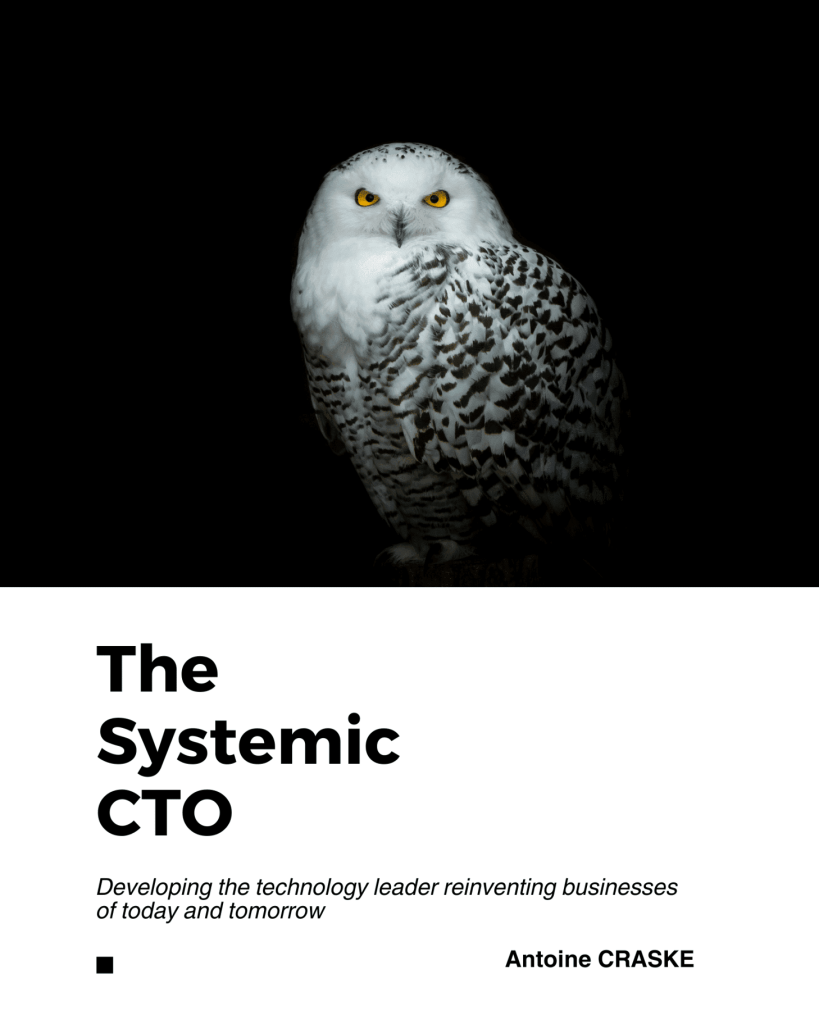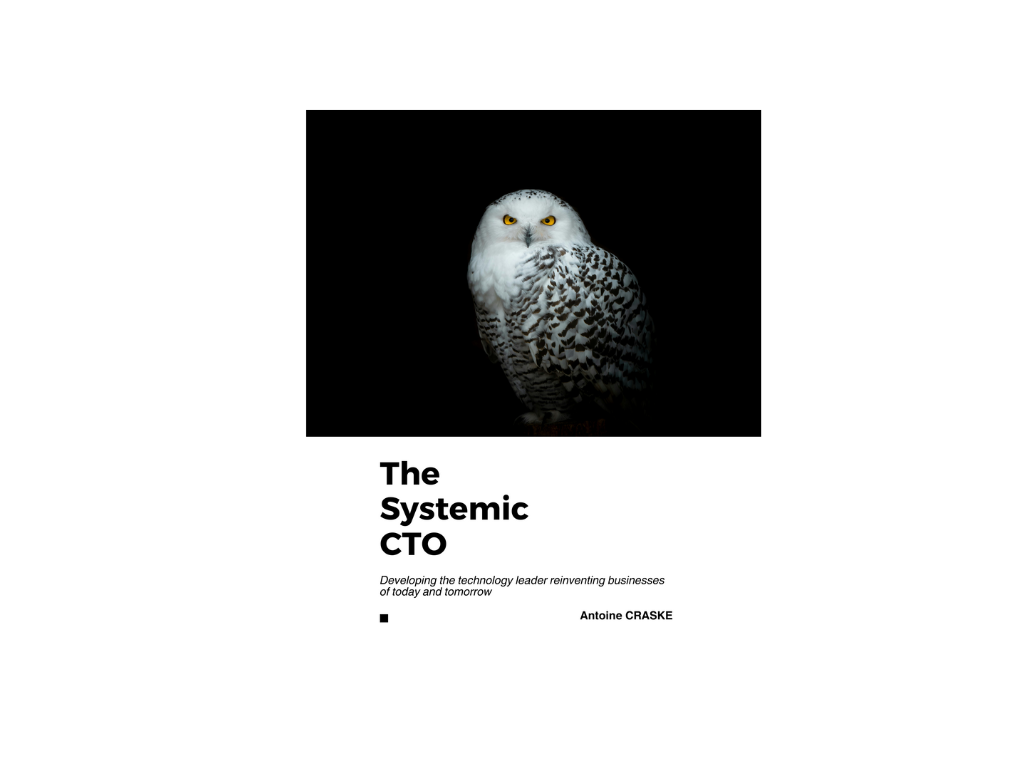The first version of “The Systemic CTO” is out.
I am happy to share the release after years of reflection, articles and months of writing.
Frustrated, learnt from my experiences and peers – I wanted to equip CTO for developing an impactful socio-technical ecosystem through a systemic approach.
It has been a personal challenge that kept me focused on bringing the big picture required to be an impactful CTO.
The importance of context
Organizations face similar challenges from far, but are unique in their context.
The systemic CTO makes the difference by:
- Understanding the business ecosystem
- Identifying end-to-end business improvements
- Focusing investments for business outcomes.
The CTO has to understand the business ecosystem, its drivers and risks to proactively shape the technological ecosystem.
He also needs to develop an understanding of the end-to-end business activities to identify limiting factors and leverage points.
He also has the challenge of navigating the stakeholders relationships and power to drive changes across the organization.
Without that vision of the context, so-called generic “tech strategy” are set to use APIs or the Cloud – missing the link to the business needs.
The need for business impact
Businesses are stretched to optimize their resources.
In that respect, the systemic CTO brings:
- An alignment of the transformation vision
- A shared urbanization enabling to focus investments
- A sequencing of the plan to reach valuable steps.
It is easy to fall into local optimizations within technology, prioritizing technical migrations or adoption of new practices.
The role of the CTO is to make sure they do bring value to the organization, not rushing steps or using “technology for technology” sakes.
The book shares the methodology to “Shape” and “Structure” the business platform are a must-do step before prioritizing other investments.
The prioritization through the big picture
DevOps, SRE, AIOps – so many buzzwords making it easy to lose sight of how each practice contributes to value generation.
The systemic CTO leverages a big picture view allowing to:
- Map the entire software production system
- Link technology to software production needs
- Prioritize capabilities in an optimised order.
MAMOS is the framework used by the systemic CTO to prioritize technology investments.
Organized around the axis of Methods, Architecture, Management, Organization, and Skills – it provides an exhaustive view of the socio-technical ecosystem.
Referred to as the software production system, the model enables CTO to identify where the main issues lie, from the urbanization to the operations.
It provides the systemic CTO with an approach to prioritize the development of capabilities in the right order to be sustainable.
The value of a systemic approach
The systemic approach addresses the entire iceberg.
Some practices focus on certain areas like collaboration processes, others in skills development, others in management priorities.
One difficulty is to know if these topics are the right priorities in the big picture, and if they contribute together with mutual reinforcements.
The systemic CTO focuses on that alignment with:
- An overall view of the software production system
- A vertical alignment of socio-technical capabilities
- A constant link of activities to outputs and outcomes.
The systemic CTO for example ensures that the urbanization aligns investments, a shared vision with management, the organizational structure, and the skills required.
The same goes for supporting a design authority with a modular architecture, collaborative reviews, and a good management layer.
The systemic CTO is also always linking activities to outputs and outcomes to drive continuous improvement actions to surpass the goals.
The orchestration towards reinvention
The systemic CTO works to support business reinvention.
His focus on the development of software production capabilities is not seen as a one-shot effort, but as a sustainable effort that lasts.
The systemic CTOs work towards reinvention by:
- Assessing the current and next level of maturity
- Focusing adequate focused investments with leverage.
- Building a system more valuable than the sum of the parts
Through its initial assessment, he positionates the systemic maturity to align the type of development actions that must be pursued.
The first cycles may not be reaching the continuous target, but it leveled up the organization with a system that can develop towards that goal.
Getting your copy
The book is available on Leanpub as pdf and on amazon as a paperback, with a french and english versions.
At the launch, the first 10 people can get the book with a 50% discount.

